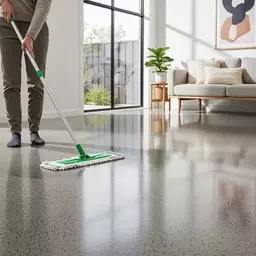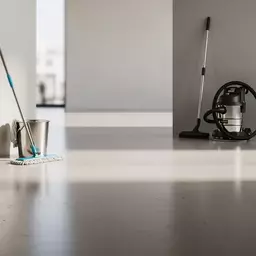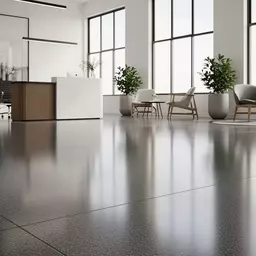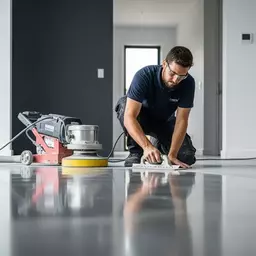Preparing Your Site for Concrete
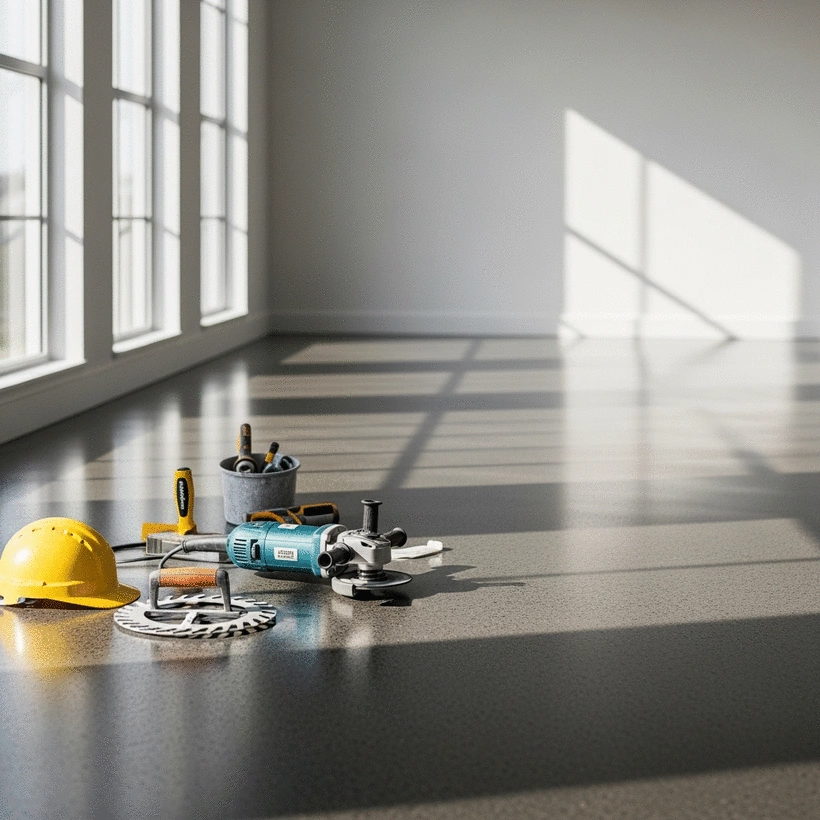
Curious about transforming your space with polished concrete flooring? This guide will not only demystify the preparation process but also highlight the benefits of this stylish and durable flooring option!
What You Will Learn
- Understanding the key benefits of polished concrete, including durability and low maintenance.
- Essential steps for effectively preparing your concrete floor for polishing, ensuring a flawless finish.
- The advantages of hiring professionals versus taking a DIY approach for your flooring installation.
- Insight into the environmental benefits of choosing polished concrete as a flooring option.
Key Decisions for Polished Concrete Flooring Projects
When considering polished concrete flooring, two critical areas require careful thought: understanding its benefits and deciding whether to DIY or hire a professional. The visual below highlights key aspects of these choices.
Benefits of Polished Concrete Flooring
- ✓ Durability & Low Maintenance
- ✓ Design Versatility
- ✓ Eco-Friendly & Sustainable
DIY vs. Professional Installation
When to Hire a Pro:
- ● Complex Surface Issues
- ● Time Constraints
- ● Quality Assurance & Equipment
DIY Pros:
- ● Cost Savings
- ● Personal Satisfaction
- ● Flexibility
A Step-by-Step Guide to Preparing Your Site for Polished Concrete Flooring
Are you ready to transform your space with polished concrete flooring? This guide will walk you through the essential steps to prepare your site, ensuring a smooth installation process. With my experience at Polished Concrete Floors Adelaide, I’ve seen firsthand how proper preparation is key to achieving stunning results!
First things first, you need to assess your existing concrete surface. This step is crucial as it helps identify any potential issues that could affect the quality of your polished floor. Remember, a well-prepared foundation leads to a beautiful finish, and I can't emphasize this enough. So, let’s dive in!
Understanding Polished Concrete Flooring: Benefits and Considerations
What is Polished Concrete Flooring and Why Choose It?
Polished concrete flooring is a durable, low-maintenance option that’s perfect for both residential and commercial spaces. It involves grinding and polishing a concrete slab to create a smooth, glossy surface. One of the reasons many people choose polished concrete is its versatility in design and functionality. Are you considering this flooring type? Let’s explore its benefits!
- Durability: Polished concrete is incredibly strong and can withstand heavy foot traffic.
- Low Maintenance: A simple sweep and occasional damp mop are usually all it takes to keep it looking great.
- Design Flexibility: You can customize the finish, color, and texture to enhance your space.
Choosing polished concrete means investing in a flooring solution that not only looks great but also performs exceptionally well. It’s no wonder this option has become so popular!
Assessing the Aesthetic and Functional Benefits
Before making a decision, it’s crucial to weigh both the aesthetic and functional benefits of polished concrete flooring. This flooring type seamlessly combines beauty with practicality, making it a top choice for many homeowners and builders.
Durability and Maintenance Advantages
One of the standout features of polished concrete is its durability. It can resist scratches, stains, and even moisture, making it a perfect choice for high-traffic areas. Plus, with minimal maintenance required, it saves you both time and money in the long run!
Design Versatility with Custom Finishes
When it comes to design, polished concrete is unmatched! You can achieve a variety of looks with different finishes and colors. Imagine a sleek, reflective surface that brightens up your space and complements your existing decor. For more design options and best practices, consult resources like those provided by the U.S. Bureau of Reclamation, which offer insights into concrete finishes and specifications. With so many options, it’s easy to find a style that matches your vision.
Exploring Sustainability and Eco-Friendly Materials in Polished Concrete
Lastly, let’s talk about sustainability. Polished concrete is an eco-friendly option because it utilizes existing concrete slabs, reducing the need for new materials. For those interested in environmentally friendly construction practices, the EPA's comprehensive procurement guidelines for cement and concrete specifications provide valuable information on sustainable material choices. As a flooring professional, I’m passionate about promoting sustainable practices in our industry. Choosing polished concrete not only enhances your space but also contributes to a healthier environment!
Essential Steps for Effective Concrete Floor Preparation
Now that you understand the benefits of polished concrete, let’s focus on preparing your concrete floor effectively. Proper preparation sets the stage for a beautiful polished finish and prevents future issues!
- Step 1: Evaluate your existing concrete surface for cracks or imperfections.
- Step 2: Clean the surface to remove any debris or contaminants.
- Step 3: Repair any damage to ensure a smooth base.
Following these steps will help you create an optimal surface for polishing. Remember, taking your time during the preparation process can save you headaches down the line!
We Want to Hear From You!
As you consider the installation of polished concrete flooring, what factors are most important to you? Is it the aesthetic appeal, durability, or perhaps the maintenance requirements? Share your thoughts with us below!
Making the Right Decision: DIY vs. Hiring Professionals
When it comes to installing polished concrete flooring, one of the first decisions you’ll face is whether to take on the project yourself or hire a professional. Each option has its merits, and understanding these can help you make an informed decision that suits your specific needs and skills.
At Polished Concrete Floors Adelaide, we believe that the right choice depends largely on your comfort level and the scope of the project. So, let’s break down when it’s best to consider hiring a professional versus going the DIY route!
When to Consider Hiring a Professional for Your Project
While some homeowners enjoy diving into DIY projects, there are clear benefits to hiring a professional for polished concrete flooring installation. Here are a few scenarios when it’s wise to bring in the experts:
- Complex Surface Issues: If your concrete surface has significant cracks, coatings, or other imperfections, hiring a pro ensures the right repair techniques are applied.
- Time Constraints: Professionals can often complete the job more quickly than a DIY approach, which can be crucial if you’re working on a tight timeline.
- Quality Assurance: Experts bring years of experience and knowledge, delivering high-quality results that meet industry standards.
- Specialized Equipment: Professional teams have access to advanced tools and machinery that may not be feasible to rent or purchase for a one-time project.
Ultimately, enlisting the help of seasoned professionals can save you time, stress, and potential costly mistakes. If you feel uncertain about your skills, it might be worth the investment! Additionally, it's important to consider safety regulations, such as those outlined by OSHA for concrete and masonry construction, to ensure a safe work environment for any installation.
Pros and Cons of DIY Concrete Floor Preparation
On the other hand, if you’re considering a DIY approach for your polished concrete flooring, there are both benefits and drawbacks to weigh. Here’s a closer look:
- Pros:
- Cost Savings: Bypassing labor costs can significantly reduce your overall expenses.
- Personal Satisfaction: Completing the project yourself can be incredibly rewarding and provide a sense of achievement.
- Flexibility: You can work at your own pace and schedule, fitting the project around your life.
- Cons:
- Time-Consuming: DIY projects often take longer than anticipated, especially without prior experience.
- Learning Curve: There’s a lot to learn about proper techniques and tools, which can be overwhelming.
- Risk of Errors: Mistakes can lead to costly repairs and may compromise the quality of the finished floor.
Before you dive into a DIY project, consider your experience level and the specific requirements of polished concrete flooring. Reflecting on both the pros and cons can help you make the best choice for your space!
Frequently Asked Questions About Polished Concrete Flooring
Here are some common questions to help you better understand polished concrete flooring:
- Q: What are the main benefits of polished concrete flooring?
A: Polished concrete offers exceptional durability, low maintenance, design versatility, and eco-friendliness, making it a popular choice for various spaces. - Q: How do you prepare an existing concrete floor for polishing?
A: Preparation involves evaluating the surface for imperfections, thorough cleaning to remove debris, and repairing any damage to ensure a smooth, optimal base for polishing. - Q: When should I hire a professional for polished concrete installation?
A: It's advisable to hire professionals for complex surface issues (e.g., significant cracks, old coatings), if you have time constraints, when seeking quality assurance, or if specialized equipment is required. - Q: What are the advantages of a DIY approach to polished concrete?
A: DIY installation can lead to cost savings by eliminating labor costs, offer personal satisfaction from completing the project yourself, and provide flexibility in scheduling. - Q: Is polished concrete an environmentally friendly flooring option?
A: Yes, polished concrete is considered eco-friendly because it utilizes existing concrete slabs, reducing the need for new materials and contributing to sustainable building practices.
Recap of Key Points
Here is a quick recap of the important points discussed in the article:
- Assess your existing concrete surface for cracks and imperfections to ensure a solid foundation.
- Polished concrete flooring offers durability, low maintenance, and design flexibility for various spaces.
- Proper preparation steps include evaluating the surface, cleaning, and repairing any damage before polishing.
- Consider hiring professionals for complex issues, tight timelines, or to ensure quality results.
- DIY approaches can save costs but may require more time and come with risks of errors.
